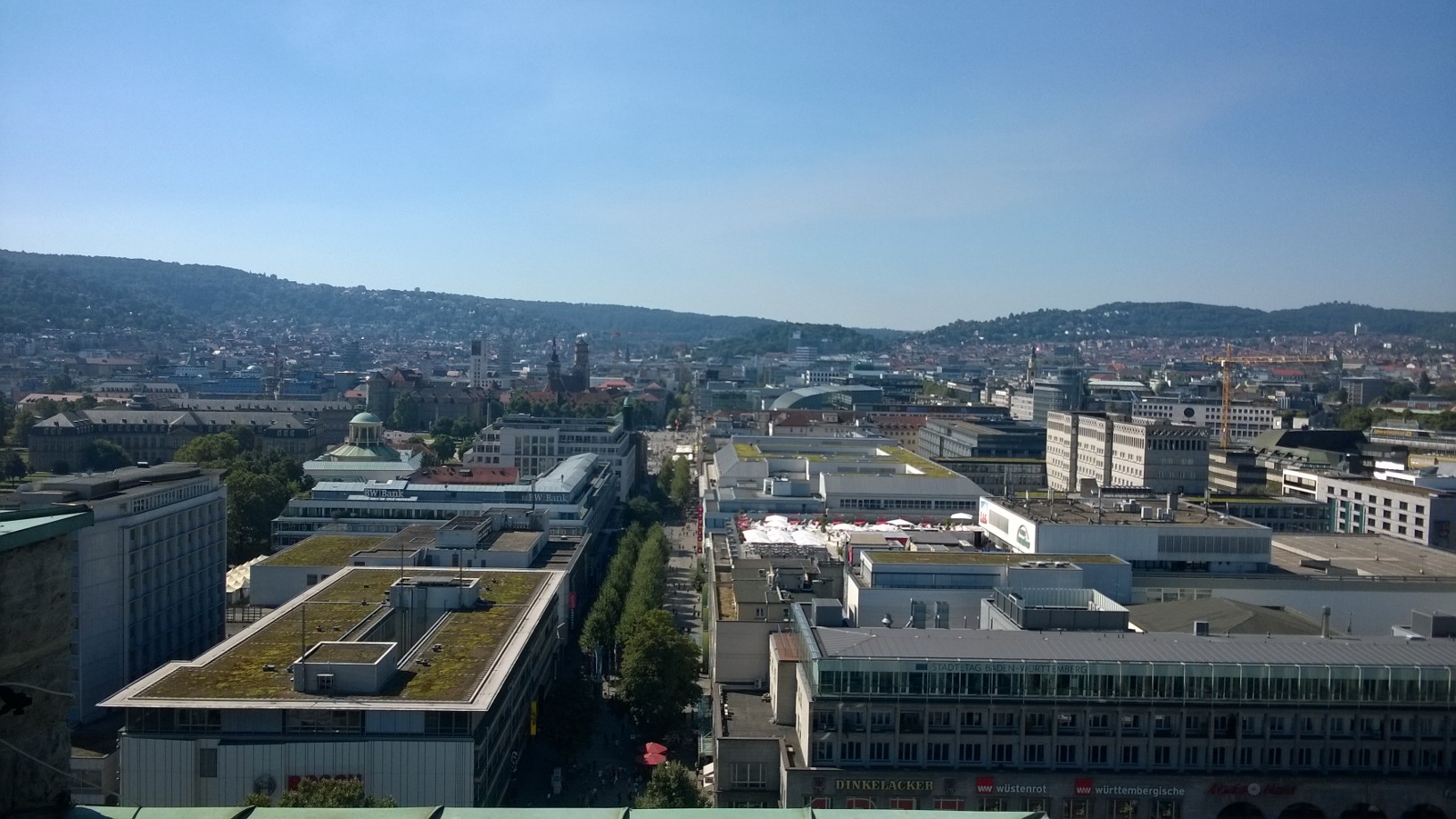Germany, Stuttgart
FC-01x Future Cities (Self-Paced) - Exercise 1 : "Making the Invisible - Visible"

Uploaded on 2016-09-04 by Derk
In the picture you see the city center of Stuttgart, Germany. The photo is taken from the top of the train station (I was on a weekend-break overthere). In the photo the main pedestrian aria form the station into the city is visible. The travel behaviour of the pedestrains is the first example of invisible information. This could be derived from collecting data from measuring the peoples movement and do some analysis with this data. Another example could be the way people change their way transport (by foot, train, bike, car, taxi). These various tranportmodes are (partly) visible in the picture. A last example of invisible information could be information about the way functions work together. In the picture various functions are visible. E.g.the beachlike terrace on a roof, shopping (in de pedestrian street) and restaurants. Data about location and activities of the citizens can lead to information how these functions are used (and maybe combined) in various parts of the city. This information can lead to knowledge witch combination of functions works best for which lifestyle/age group/etc. This knowledge can be used to contribute to the planning of more livable urban spaces.